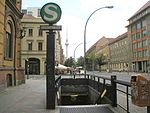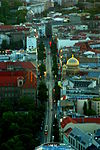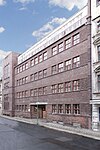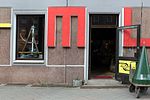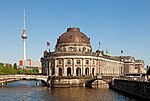Postfuhramt
1881 establishments in GermanyArt galleries disestablished in 2012Art museums and galleries in BerlinBuildings and structures in Berlin destroyed during World War IIBuildings and structures in Mitte ... and 3 more
Former post office buildingsHeritage sites in BerlinItalian Renaissance Revival architecture

Postfuhramt (English: Mail Delivery Office), formally known as Kaiserliche Postfuhramt (English: Imperial Mail Delivery Office) is a historic building built in 1881 and located on Oranienburger Straße (English: Oranienburger Street) at the corner of Tucholskystraße (English: Tucholsky Street), in the Spandauer Vorstadt area of Mitte, Berlin. Since 1975, it has been a listed as a protected building (via Denkmalschutz). From 2006 until 2012, the space hosted an art gallery and exhibitions. In 2012, the building was sold to Biotronik, a medical manufacturing company specializing in medical technology.
Excerpt from the Wikipedia article Postfuhramt (License: CC BY-SA 3.0, Authors, Images).Postfuhramt
Oranienburger Straße, Berlin Mitte
Geographical coordinates (GPS) Address External links Nearby Places Show on map
Geographical coordinates (GPS)
| Latitude | Longitude |
|---|---|
| N 52.525277777778 ° | E 13.392777777778 ° |
Address
Postfuhramt
Oranienburger Straße 35-36
10117 Berlin, Mitte
Germany
Open on Google Maps
